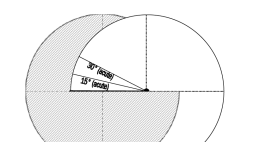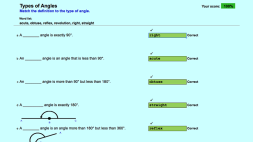Browsing by The Australian Curriculum
Investigate, with and without digital technologies, angles on a straight line, angles at a point and vertically opposite angles. Use results to find unknown angles (ACMMG141) * building on students' understanding of turn and rotation in mapping and rotational symmetry to measure, estimate and compare angles in degrees and classify angles according to their sizes * investigating the use of rotation and symmetry in the diagrammatic representations of kinship relationships of Central and Western Desert people * estimating, measuring and comparing angles, for example, by recognising the magnitude of angles including 30°, 45°, 90°, 180° and 270° to make reasonable estimates of angles up to a complete turn of 360°, or using a protractor to measure angles to the nearest degree * identifying that angles have arms and a vertex, and that size is the amount of turn required for one arm to coincide with the other; the size is measured in degrees with a protractor using the two alternate conventions for naming angles * identifying that the size of a right angle is 90° and defining acute, obtuse and reflex angles and rotation by relating them to right angles

